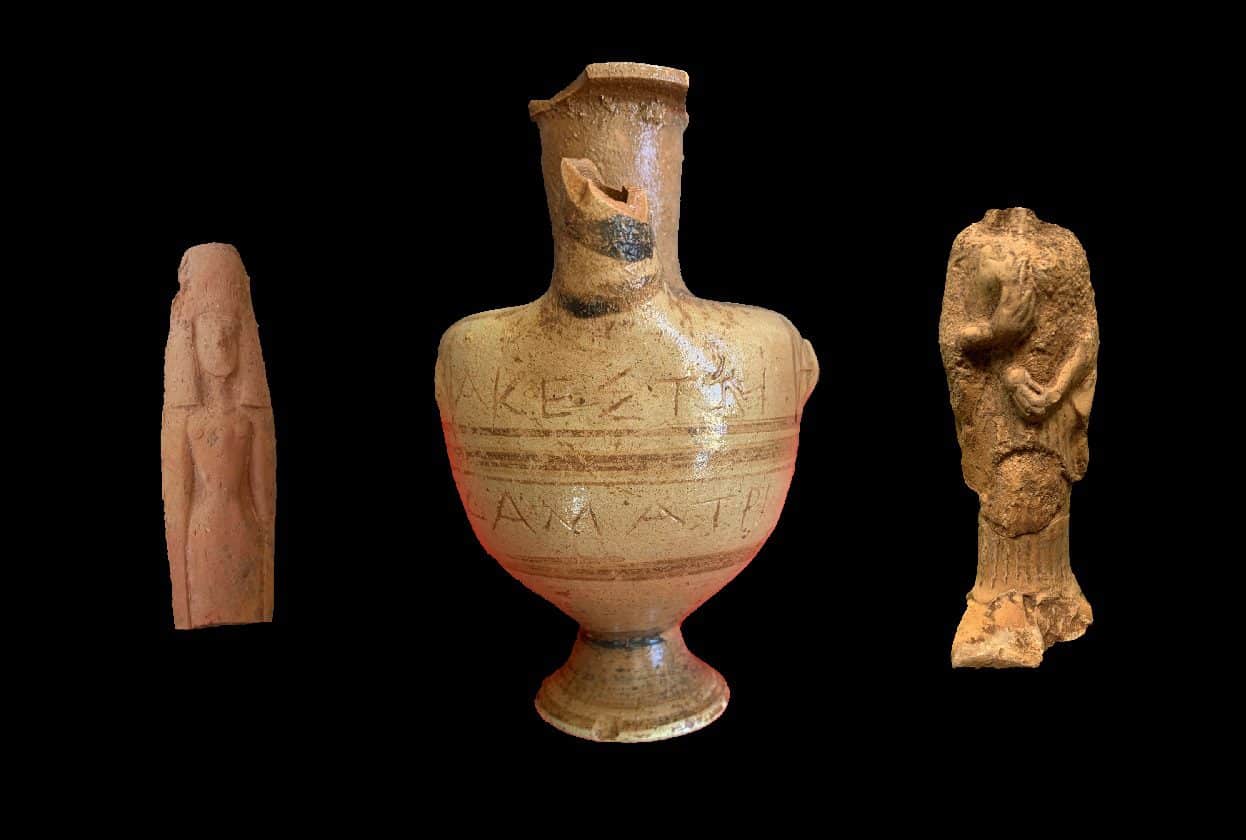Archaeologists have unearthed new discoveries at the Temple of Demeter, located in the ancient harbour city of Phalasarna, in the far west of Crete.
Phalasarna was first mentioned in ancient texts by the historians and geographers: Scylax, Strabo, Polybius, Livy and Pliny. The city-state prospered through its maritime affairs, evidenced by the remains of large, monumental buildings and artwork. The treaty with Polyrrhenia gives evidence that in the third century BC, the inhabitants were engaged in piracy, a common practice of the Cretan city-states.
In 69-67 BC, the Roman Republic stormed the city, blocked the harbour with massive masonry and destroyed the whole city. The location of the city was then forgotten, and Phalasarna appears in Venetian records only as a lost city. The site was rediscovered in the 19th century by British explorers Robert Pashley and Captain T. A. B. Spratt.
The Temple of Demeter was constructed at the city acropolis, situated on a rocky hill at the site of a natural cave. The temple operated as an open-air sacred space for worshipping Demeter, the Olympian goddess of the harvest and agriculture, presiding over crops, grains, food, the fertility of the earth and the power of water as a source of life.

In Greek tradition, Demeter is the second child of the Titans Rhea and Cronus, and sister to Hestia, Hera, Hades, Poseidon, and Zeus. Demeter was often considered to be the same figure as the Anatolian goddess Cybele, and she was identified with the Roman goddess Ceres.
The architectural structure of the temple is in the Doric style and was rebuilt with stones for a second use in the late 4th to early 3rd century BC on the site of an earlier sacred site. A monumental staircase led to two single-room buildings, with the eastern building being the main temple structure and the western building serving an auxiliary function.
A geophysical survey conducted by archaeologists from the Mediterranean University of Crete revealed buried architectural remains which indicate a semi-circular structure.
Excavations have found archaic objects in the sanctuary of the temple, including high quality vases, one of which is inscribed in the Doric dialect and mentions A K E S T O I D A M A T R I (Akestoi dedicates to the goddess Demeter). The team also found artefacts linking Phalasarna to the ancient Egyptians and Phoenicians. Other finds include figurines, spearheads, vases, and enthroned feminine figures.
Greek Ministry of Culture and Sports
Header Image Credit : YPPOA







